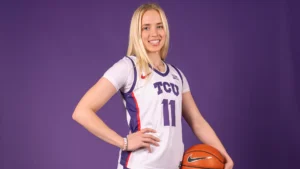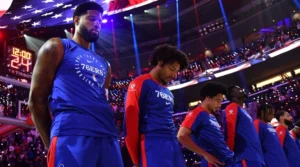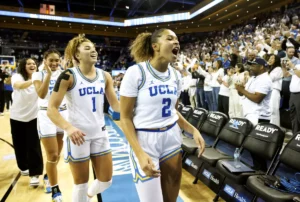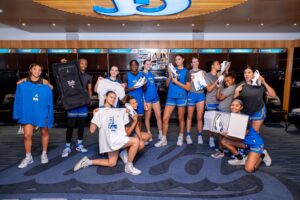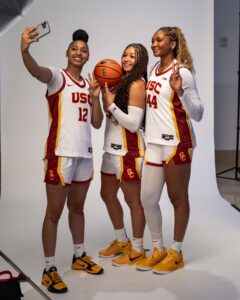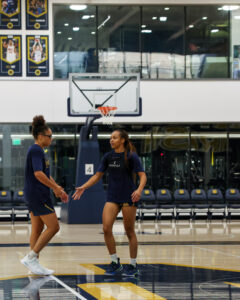Distance Shooting Concerns
The most significant concern with Daniels has been his shooting. This part of his game has primarily held him back from being considered a top-tier prospect in this draft, with “he can’t shoot” often being the response to saying Daniels is an elite prospect. However, if we look at the progression of his mechanics and his improving numbers, there is reason to hope that Daniels can become a respectable shooter in the NBA.
The video above shows Daniels’ shooting form progression from 2019 to pre-draft workouts. The most noticeable difference is the amount of dip in Dyson’s form. In 2019, Dyson often bent extremely low before releasing his jumper. Added movements in jumpshots often lead to more variables regarding “things that can go wrong.” An inconsistent dip in his shot could be part of what leads to poor shooting splits, and this loud motion he had in 2019 certainly contributed. In 2022, the dip is still there but much less exaggerated. Dyson’s improved jumper is less springy, allowing him to cut down on these variables.
Daniels has stated in interviews that he feels more comfortable shooting off a set pound dribble than he does right off the catch. Part of this can be attributed to Dyson’s hand placement when catching the ball and the pound dribble, allowing him to reset his hands.
Dyson often catches the ball with his hands in the wrong place to go directly to a shot. His inconsistent shooting bed can minimize this added variable by focusing on the initial contact with the ball and getting his hands in the right place in training.
Another significant change is the hitch in his jumper. The hitch led to an inconsistent release and an inconsistent follow-through. Along with the springy jumper and poor hand placement, these variables lead to Dyson’s inconsistency from 3. Dyson’s release has become more fluid, rather than a delayed release at the peak height of his jumper. His improved jumper has led to a slower release and looks more robotic and stiff.
The slower release helps rid some of the inconsistencies in follow-through, and the more stabilized base eliminates the loud jump shot mechanics. Although there is still plenty of progress to be made, and the goal would be to speed up his mechanics, the constant improvements and the correlated rises in percentages give hope for progress.
Between 2019 and 2021, before the FIBA U19 World Cup, Daniels shot 21.4% from the 3-point range in international competition. At the FIBA U19 World Cup in 2021, Daniels’ 3-point shooting increased to 30.2% on six attempts per game. His shooting improvement gave hope into the Ignite season that Daniels could become an effective 3-point shooter.
Unfortunately, the context of Ignite may not have helped in this case. With a lack of creative players and spacing, almost all the Ignite players struggled to find consistent looks from three. Dyson started the season slowly, shooting 25.5% from NBA range three during the Showcase Cup, which was still an improvement from his historic 21.4% shooting during international play.
In the first half of the season, this lack of ability to shoot consistently led to defenses leaving Dyson open, and he was unable to capitalize, shooting 6/24 on uncontested catch & shoot 3s. Then, everything changed for Daniels with a change in form and his growth spurt. His 3-point percentage rose to 36.8% and 39% on Catch & Shoot attempts.
This incredible leap may be an outlier, and it is unlikely for Dyson to shoot at this rate in the NBA. Regardless, teams with a shooting coach who is willing to continue the progress Dyson has made will be able to turn him into a passable and potentially positive 3-point shooter.


